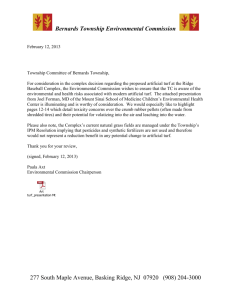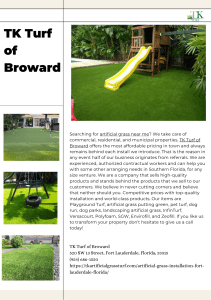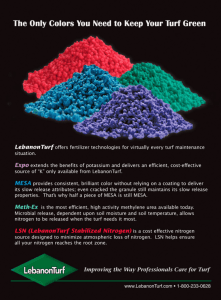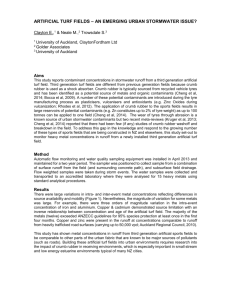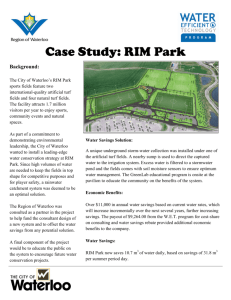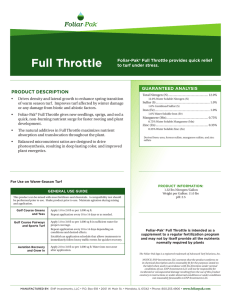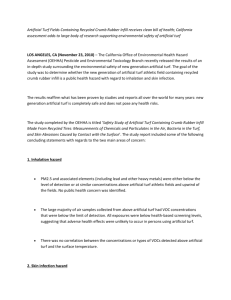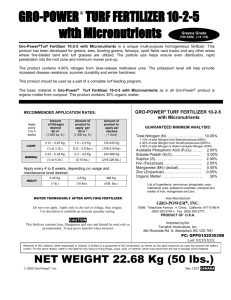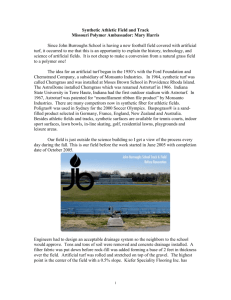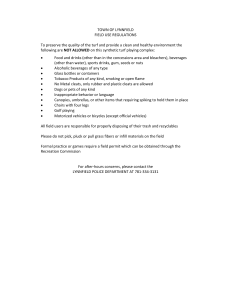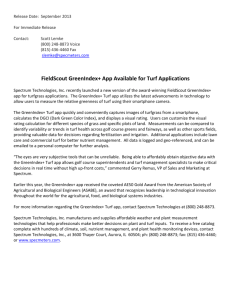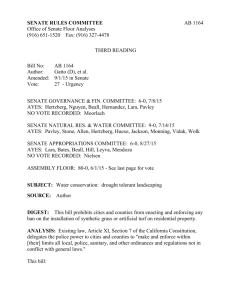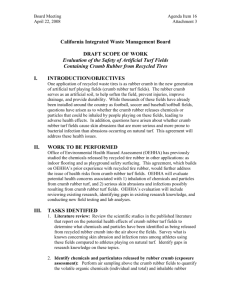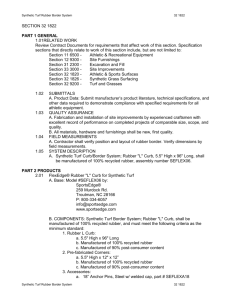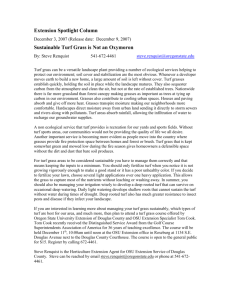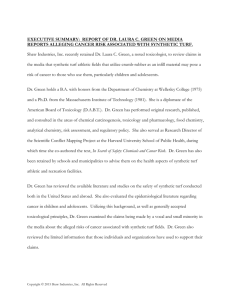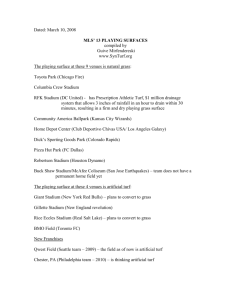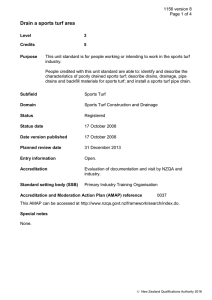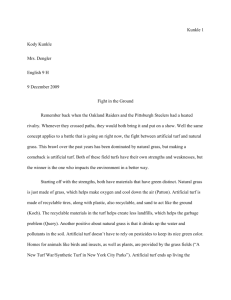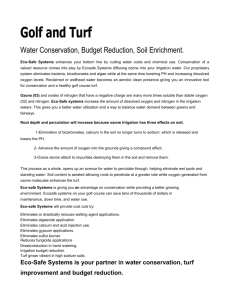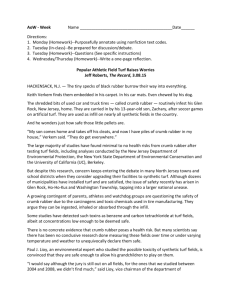natural turf is superior to rubber crumb fields
advertisement
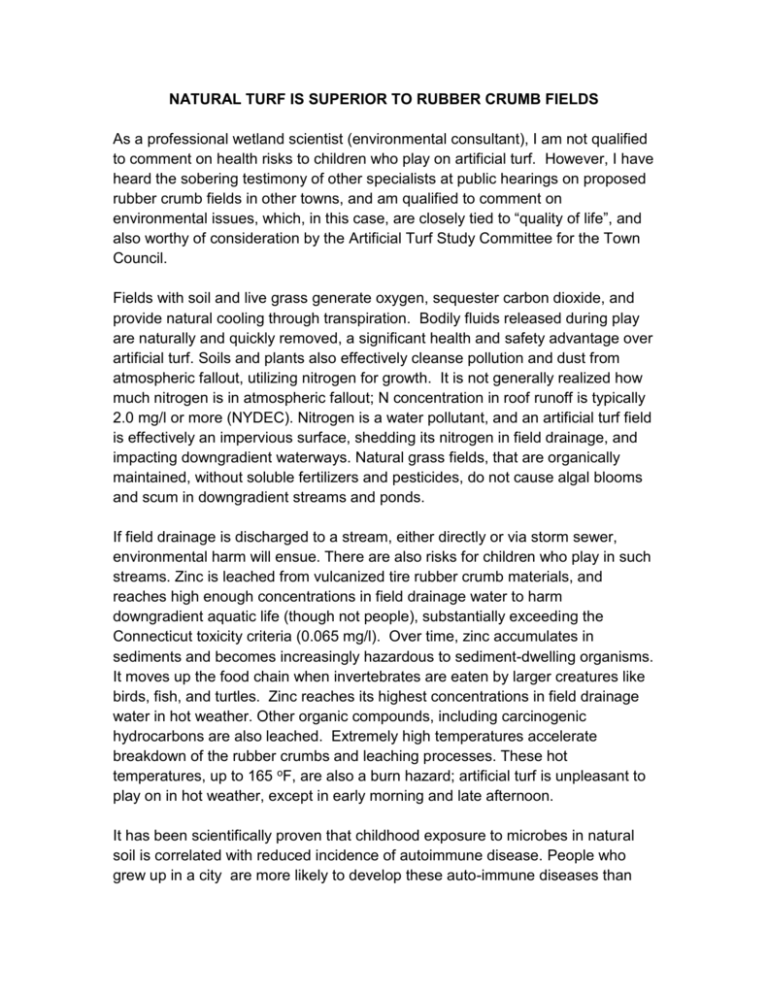
NATURAL TURF IS SUPERIOR TO RUBBER CRUMB FIELDS As a professional wetland scientist (environmental consultant), I am not qualified to comment on health risks to children who play on artificial turf. However, I have heard the sobering testimony of other specialists at public hearings on proposed rubber crumb fields in other towns, and am qualified to comment on environmental issues, which, in this case, are closely tied to “quality of life”, and also worthy of consideration by the Artificial Turf Study Committee for the Town Council. Fields with soil and live grass generate oxygen, sequester carbon dioxide, and provide natural cooling through transpiration. Bodily fluids released during play are naturally and quickly removed, a significant health and safety advantage over artificial turf. Soils and plants also effectively cleanse pollution and dust from atmospheric fallout, utilizing nitrogen for growth. It is not generally realized how much nitrogen is in atmospheric fallout; N concentration in roof runoff is typically 2.0 mg/l or more (NYDEC). Nitrogen is a water pollutant, and an artificial turf field is effectively an impervious surface, shedding its nitrogen in field drainage, and impacting downgradient waterways. Natural grass fields, that are organically maintained, without soluble fertilizers and pesticides, do not cause algal blooms and scum in downgradient streams and ponds. If field drainage is discharged to a stream, either directly or via storm sewer, environmental harm will ensue. There are also risks for children who play in such streams. Zinc is leached from vulcanized tire rubber crumb materials, and reaches high enough concentrations in field drainage water to harm downgradient aquatic life (though not people), substantially exceeding the Connecticut toxicity criteria (0.065 mg/l). Over time, zinc accumulates in sediments and becomes increasingly hazardous to sediment-dwelling organisms. It moves up the food chain when invertebrates are eaten by larger creatures like birds, fish, and turtles. Zinc reaches its highest concentrations in field drainage water in hot weather. Other organic compounds, including carcinogenic hydrocarbons are also leached. Extremely high temperatures accelerate breakdown of the rubber crumbs and leaching processes. These hot temperatures, up to 165 oF, are also a burn hazard; artificial turf is unpleasant to play on in hot weather, except in early morning and late afternoon. It has been scientifically proven that childhood exposure to microbes in natural soil is correlated with reduced incidence of autoimmune disease. People who grew up in a city are more likely to develop these auto-immune diseases than those who were farm kids. For some suburban children, athletic play on a natural dirt field may be their only opportunity to develop a healthy immune system. I would rather see the town of Cheshire use its funds to build more athletic fields with natural soils and live turf, such that there would be no need for a very high level of usage on any one field, that is unsustainable on a natural field. September 10, 2008 Sigrun Sigrun N. Gadwa, MS, PWS Ecologist, Registered Soil Scientist 183 Guinevere Ridge, Cheshire, CT 06410 Phone: 203 271 1949 mobile: 203 537 1869 Fax: 860 647 8397
